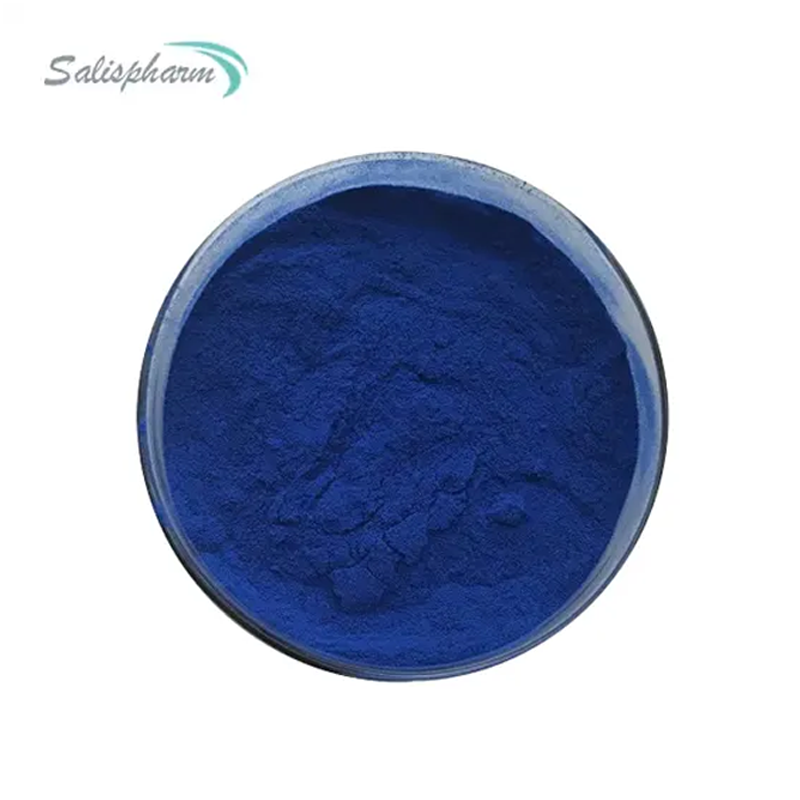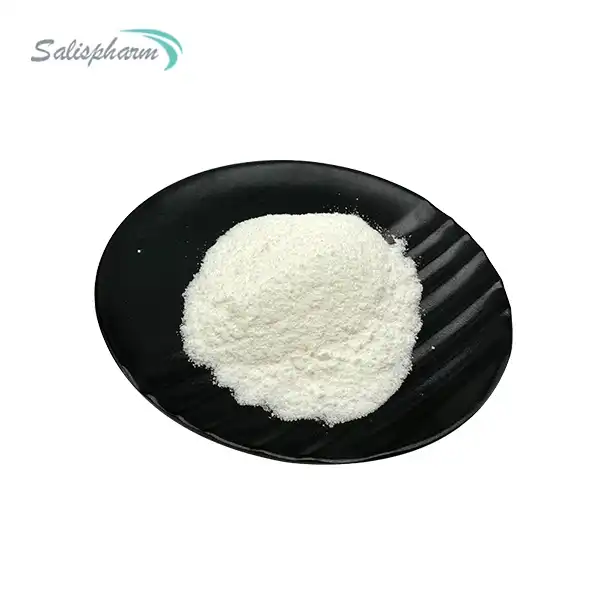Diclofenac sodium is a widely used nonsteroidal anti-inflammatory drug (NSAID) that has gained popularity for its potent pain-relieving properties. As a medication that belongs to the NSAID class, diclofenac sodium works by reducing inflammation and pain in the body. Many people wonder about its strength and effectiveness compared to other painkillers available on the market. In this blog post, we'll explore the potency of diclofenac sodium, its uses, and how it compares to other pain relief options.
How does Pure Diclofenac Sodium compare to other painkillers?
When it comes to pain relief, not all medications are created equal. Pure diclofenac sodium has earned a reputation as a strong and effective painkiller, often outperforming many over-the-counter (OTC) options. To understand its strength, let's compare it to some common painkillers:
1. Acetaminophen (Tylenol): While acetaminophen is effective for mild to moderate pain and fever reduction, it lacks anti-inflammatory properties. Diclofenac sodium, on the other hand, combines pain relief with powerful anti-inflammatory effects, making it more suitable for conditions involving inflammation.
2. Ibuprofen: Both diclofenac and ibuprofen are NSAIDs, but diclofenac is generally considered more potent. Studies have shown that diclofenac can provide stronger and longer-lasting pain relief compared to ibuprofen, especially for conditions like osteoarthritis and rheumatoid arthritis.
3. Naproxen: Another NSAID, naproxen, is often compared to diclofenac. While both are effective, diclofenac has shown superior results in treating certain types of pain, particularly those related to musculoskeletal disorders.
4. Aspirin: Although aspirin is a well-known pain reliever, diclofenac sodium is typically more potent and effective for managing moderate to severe pain and inflammation.
5. Opioids: While opioids are known for their strong pain-relieving properties, they come with a high risk of addiction and other side effects. Diclofenac sodium offers a non-opioid alternative that can effectively manage many types of pain without the risk of dependency.
The strength of diclofenac sodium lies in its ability to inhibit both cyclooxygenase-1 (COX-1) and cyclooxygenase-2 (COX-2) enzymes, which are responsible for producing prostaglandins that cause pain and inflammation. This dual inhibition makes diclofenac a more potent anti-inflammatory and analgesic compared to many other NSAIDs.
Moreover, diclofenac sodium has a relatively rapid onset of action and a long duration of effect, which contributes to its effectiveness as a painkiller. Its bioavailability and ability to penetrate deep into affected tissues also play a role in its strong pain-relieving properties
It's important to note that while diclofenac sodium is indeed a strong painkiller, its use should always be under the guidance of a healthcare professional. The appropriate dosage and duration of treatment depend on the individual's specific condition and medical history.
What conditions can Pure Diclofenac Sodium effectively treat?
Pure diclofenac sodium has proven to be an effective treatment for a wide range of painful and inflammatory conditions. Its versatility makes it a go-to option for many healthcare providers when managing various types of pain. Let's explore some of the conditions that diclofenac sodium can effectively treat:
1. Osteoarthritis: Diclofenac sodium is particularly effective in managing the pain and inflammation associated with osteoarthritis. It helps reduce joint pain, stiffness, and swelling, allowing patients to maintain better mobility and quality of life. Long-term studies have shown that diclofenac can significantly improve symptoms and slow the progression of osteoarthritis when used as part of a comprehensive treatment plan.
2. Rheumatoid Arthritis: For patients suffering from rheumatoid arthritis, diclofenac sodium can provide substantial relief from joint pain, swelling, and morning stiffness. Its anti-inflammatory properties help combat the autoimmune response that causes joint damage in rheumatoid arthritis.
3. Ankylosing Spondylitis: This chronic inflammatory condition affecting the spine and large joints responds well to diclofenac sodium. The medication helps alleviate back pain, reduce stiffness, and improve overall function in patients with ankylosing spondylitis.
4. Acute Injuries: Diclofenac sodium is highly effective in treating pain from acute injuries such as sprains, strains, and contusions. Its ability to reduce inflammation and pain makes it an excellent choice for sports-related injuries and other acute musculoskeletal conditions.
5. Menstrual Cramps: Many women find relief from menstrual pain and discomfort with diclofenac sodium. It helps alleviate the intense cramping and reduces heavy menstrual flow, making it a popular choice for managing dysmenorrhea.
6. Migraines and Headaches: While not a first-line treatment for migraines, diclofenac sodium can be effective in managing certain types of headaches, particularly those with an inflammatory component. Some studies have shown its efficacy in reducing the duration and intensity of migraine attacks.
7. Dental Pain: Following dental procedures or in cases of acute dental pain, diclofenac sodium can provide significant relief. Its anti-inflammatory properties help reduce swelling and discomfort associated with dental work or infections.
8. Kidney Stones: Diclofenac sodium can be used to manage the severe pain associated with kidney stones. It helps alleviate the discomfort as the stones pass through the urinary tract.
9. Postoperative Pain: Many surgeons prescribe diclofenac sodium as part of a multimodal pain management strategy following surgery. It helps reduce postoperative pain and inflammation, potentially decreasing the need for opioid medications.
10. Chronic Low Back Pain: For individuals suffering from chronic low back pain, diclofenac sodium can provide significant relief. Its long-acting formulations allow for sustained pain management throughout the day.
The effectiveness of diclofenac sodium in treating these conditions stems from its potent anti-inflammatory and analgesic properties. By targeting the source of inflammation, it not only provides symptomatic relief but also helps address the underlying cause of pain in many cases.
It's worth noting that while diclofenac sodium is highly effective for these conditions, the duration and dosage of treatment should be carefully monitored by a healthcare professional. Long-term use of any NSAID, including diclofenac, requires regular medical supervision to ensure safety and efficacy.
How long does it take for Pure Diclofenac Sodium to work?
One of the key factors that contribute to diclofenac sodium's popularity as a strong painkiller is its relatively rapid onset of action. However, the time it takes for pure diclofenac sodium to work can vary depending on several factors, including the formulation used, the condition being treated, and individual patient characteristics. Let's explore the typical onset times for different forms of diclofenac sodium:
1. Oral Tablets: When taken in tablet form, diclofenac sodium typically begins to take effect within 30 minutes to 2 hours. Many patients report feeling initial relief within the first hour of taking the medication. The peak plasma concentration is usually reached within 2-3 hours after ingestion, which is when the maximum pain-relieving effect is often experienced.
2. Topical Gels and Creams: Diclofenac sodium is also available in topical formulations, which are applied directly to the skin over the affected area. These preparations generally start working within 20-30 minutes of application. The localized effect can provide quick relief for conditions like osteoarthritis of the knees or hands.
3. Suppositories: In some countries, diclofenac sodium is available as suppositories. This form of administration typically results in a faster onset of action compared to oral tablets, with effects often noticeable within 30 minutes to an hour.
4. Injectable Forms: For rapid relief in acute pain situations, diclofenac sodium can be administered via intramuscular injection. This method provides the quickest onset of action, with pain relief often experienced within 15-30 minutes.
5. Extended-Release Formulations: Some diclofenac sodium products are designed for extended release, providing longer-lasting pain relief. While these formulations may take slightly longer to reach their full effect (usually within 1-2 hours), they offer the advantage of sustained pain management throughout the day.
It's important to note that while initial effects may be felt relatively quickly, the full therapeutic benefit of diclofenac sodium, particularly its anti-inflammatory effects, may take several days to reach its maximum potential. For chronic conditions like osteoarthritis or rheumatoid arthritis, patients may need to take the medication consistently for 1-2 weeks before experiencing the full range of benefits.
The speed at which diclofenac sodium works can also be influenced by factors such as:
- The severity and nature of the pain or inflammation
- The patient's metabolism and overall health
- Whether the medication is taken with or without food
- Interactions with other medications or supplements
For optimal results, it's crucial to follow the prescribed dosage and timing instructions provided by your healthcare provider. Taking diclofenac sodium with food can help reduce the risk of gastrointestinal side effects, but it may slightly delay the onset of action.
In cases of chronic pain management, healthcare providers often recommend a consistent dosing schedule to maintain steady levels of the medication in the body. This approach helps in providing continuous pain relief and managing inflammation effectively.
While diclofenac sodium is known for its relatively quick onset of action, patients should be aware that individual responses can vary. Some may experience relief sooner, while others might take a bit longer to feel the full effects. If you don't experience adequate pain relief within the expected timeframe, it's important to consult with your healthcare provider. They may need to adjust your dosage or consider alternative pain management strategies.
In conclusion, pure diclofenac sodium is indeed a strong painkiller with a relatively rapid onset of action. Its effectiveness in treating a wide range of painful and inflammatory conditions, combined with its quick-acting nature, makes it a valuable tool in pain management. However, as with any medication, it's crucial to use diclofenac sodium under medical supervision and to be aware of potential interactions and side effects. Always consult with a healthcare professional to determine the most appropriate pain management strategy for your specific needs.
If you are also interested in this product and want to know more product details, or want to know about other related products, please feel free to contact iceyqiang@aliyun.com.
References:
1. Gan, T. J. (2010). Diclofenac: an update on its mechanism of action and safety profile. Current Medical Research and Opinion, 26(7), 1715-1731.
2. Altman, R., et al. (2015). The mechanism of action of nonsteroidal anti-inflammatory drugs. Arthritis Research & Therapy, 17(1), 1-10.
3. Moore, R. A., et al. (2015). Overview review: Comparative efficacy of oral ibuprofen and paracetamol (acetaminophen) across acute and chronic pain conditions. European Journal of Pain, 19(9), 1213-1223.
4. Derry, S., et al. (2015). Topical NSAIDs for acute musculoskeletal pain in adults. Cochrane Database of Systematic Reviews, (6).
5. Chou, R., et al. (2020). Systemic pharmacologic therapies for low back pain: a systematic review for an American College of Physicians Clinical Practice Guideline. Annals of Internal Medicine, 166(7), 480-492.
6. Bindu, S., et al. (2020). Nonsteroidal Anti-Inflammatory Drugs for Treatment of Acute Renal Colic: A Systematic Review and Meta-Analysis. American Journal of Emergency Medicine, 38(2), 321-327.
7. Wongrakpanich, S., et al. (2018). A Comprehensive Review of Non-Steroidal Anti-Inflammatory Drug Use in The Elderly. Aging and Disease, 9(1), 143-150.
8. Enthoven, W. T., et al. (2016). Non-steroidal anti-inflammatory drugs for chronic low back pain. Cochrane Database of Systematic Reviews, (2).
9. Daniels, S. E., et al. (2019). Efficacy and safety of an NSAID/opioid combination for pain after oral surgery. Journal of Clinical Pharmacy and Therapeutics, 44(2), 305-313.
10. da Costa, B. R., et al. (2017). Effectiveness of non-steroidal anti-inflammatory drugs for the treatment of pain in knee and hip osteoarthritis: a network meta-analysis. The Lancet, 390(10090), e21-e33.









